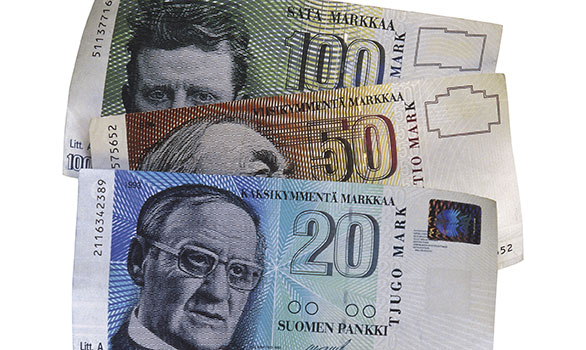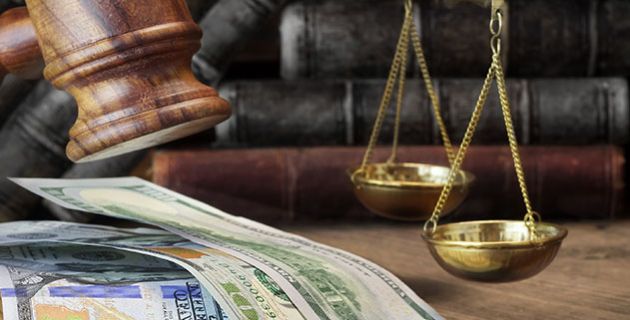The Declaration of Independence states that all men are created equal, but when it comes to paying for legal discretions in the country it created, that equity can be hard to find.
Flat fees for traffic violations may seem like the fairest way to ensure everyone pays the same price for their actions, but the financial penalties are felt with varying degrees of pain by drivers in different economic situations.
A $100 fine could represent to some an insurmountable debt that could lead to a dizzying number of late fees and court dues, sucking those already struggling into an even deeper financial hole if they fail to cover the cost.
For the more affluent, the same price is mere pocket change, its intended sting dulled and message of misconduct lost. Indeed, several studies show that those with more money are less likely to behave ethically, including on the road, with the lack of financial discomfort registered by their actions being a factor.
Many states have already tacitly acknowledged the lopsided effect such penalties have on their residents and have moved to correct the imbalance with a flurry of recently-passed legislation, but most of those laws focus on what happens after a fine is already issued. Would the country be better served by changing how the fines themselves work?
Playing the Percentages
There’s an alternative to the flat fee structure, and it’s already widely in use around the world.
Called a daily fine, the idea bases a financial penalty for traffic incidents on an amount of money deemed reasonable to take from the violator.
“Reasonable,” is, of course, quite subjective, but therein lies the point: the system aims to make offenders bear equal economic burdens for their blunders, relative to what they earn.
While there are slight variations of the mathematical formula used to derive that sum, most of the laws account for the same general factors: how much money the violator has, and how severe the violation in question is.

In Finland, the first European country to adopt the structure, the calculation begins by estimating how much daily “spending money” an individual has, then dividing that number by two. This factor is then deemed a “reasonable” amount of money to deprive the offender of, and it gets multiplied out by another factor depending on the penalty.
That second factor in Finland represents the number of days the offender should go without the extra spending cash, with the maximum multiplier set at 120 days. (For example, a speeding ticket for driving 15 MPH incurs a 12-day multiplier.)
The calculation has led to some outrageous fines, including the infamous and mindboggling sum of $103,600—the country’s all-time highest traffic penalty—issued to a high-ranking Nokia executive for speeding on his motorcycle. (The violator in question earned an annual salary equivalent to $12.5 million.) Still, those cases are rare, and experiments on the daily fine system in the States show the concept could have other benefits.
Fare & Balanced?
Research analyst Judith Greene first took the idea of daily fines stateside in 1992.
Comprised of information gathered through several Milwaukee-based judges willing to experiment with the idea, her initial study found net positive results for the payment plan.
Participants in the daily fine programs were found to pay their penalties in full 37% of the time, compared to 25% of those with conventional traffic fines.
Participants in the daily fine programs were found to pay their penalties in full 37% of the time, compared to 25% of those with conventional traffic fines.
And the system was even more effective for those deemed among the state’s lowest earners, with 33% of participants making $197 or less per month paying the fine back in total, compared to 14% facing traditional fees.
The success of the study led to another test seven years later, tracking the course of financial payments of 382 offenders in Arizona, half of whom received daily fines, the other half issued regular fees.
Within a year of committing the violations, 66% of those issued daily fines had completed their payments, compared to just 30% of regular fee recipients. And with daily fines skewing more expensive than flat rates, the program yielded more money for the state, netting an additional $62,000.
The ability for daily fine violators to pay up more swiftly also meant their cases moved more quickly through the system, freeing up precious time and space—and money—for the courts to focus elsewhere, the report noted.
Still, despite their successes, the experiments never bloomed into policy.
Bridging the Gap
The wage gap in America has never been higher, and the economic divide continues to grow.
The nation’s top 1% of earners accounted for 38.6% of the country’s wealth in 2016, compared to the bottom 90%, who cumulatively took home 28.5% of the pie, according to the latest numbers from the Federal Reserve. Both of those figures represent substantial jumps—with the wealthiest on the ascent and the poor taking home less—from numbers recorded by the Fed in 2007.
And while daily fines alone won’t close that expanse, the system could offer help for those increasingly finding themselves on the lower side of the gulf—and justice for those on the high end. After all, if all men are created equal, shouldn’t they suffer equally—or as equally as possible—at the hands of the law?
